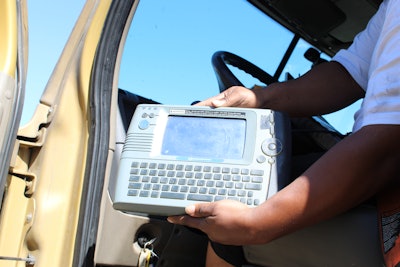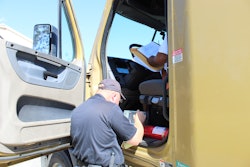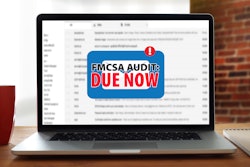 Ensure your drivers know how to transfer e-log data to inspectors at roadside via the web transfer method, said FMCSA enforcement chief Joe DeLorenzo this week in a webinar hosted by Trimble. That will help the interaction go smoothly and prevent frustration at roadside by drivers and inspection officers, he said.
Ensure your drivers know how to transfer e-log data to inspectors at roadside via the web transfer method, said FMCSA enforcement chief Joe DeLorenzo this week in a webinar hosted by Trimble. That will help the interaction go smoothly and prevent frustration at roadside by drivers and inspection officers, he said.During the COVID-19 pandemic, drivers are being asked more frequently by inspection officers to do an electronic transfer of logbook data — rather than a local transfer — which flows to the U.S. DOT’s web-based eRODS system to flag possible violations.
As reported Wednesday, compliance audits of fleets also have continued during the pandemic, with more investigators asking fleets to transfer logbook data to the Federal Motor Carrier Safety Administration for review.
Fleets can upload electronic logbook and other records to a web application. Inspectors then talk to drivers and company officials about specific areas of concern.
“We are continuing to conduct investigations and issue a safety rating where appropriate,” said Joe DeLorenzo, Director, Office of Enforcement and Compliance at FMCSA, during a breakout session at the virtual Trimble insight conference on Wednesday.
The agency has been using the web application to conduct offsite investigations “for quite some time,” he noted, “to help maintain the same process so we continue to protect everyone’s health.”
For roadside inspections to go smoothly, DeLorenzo advised fleets to “make sure drivers know how to do a data transfer” in order to prevent situations where officers become frustrated and issue citations.
“At least have an instruction sheet” for drivers to do a data transfer, he stressed. Roadside officers in most cases will request drivers to do a web services transfer. This function is included in many ELDs and is the “fastest, most reliable method to speed through an inspection and get your driver moving again,” DeLorenzo said.
He explained how the eRODS system “doesn’t automatically say” a driver is in violation. It leaves the final decision up to the officer or auditor. Some of the most common flags are for use of the “adverse driving” condition and unidentified driving time.
Unidentified drive time could be the result of a driver failing to annotate logs for personal conveyance or by turning off the ELD, he said.
Other common flags are for drivers exceeding eight hours of on-duty time without taking a required 30-minute break or by entering or editing logbook events, he noted.
During a roadside inspection, officers can also request time records from drivers with short-haul carriers who are exempt from keeping a record of duty status and using ELDs. Short-haul property carriers must give drivers at least 10 hours off between shifts, and have a system to record a driver’s start and stop times, total time spent on duty, and keep a running total of the hours worked in the past seven days.
When inspecting a short-haul driver at roadside, an officer could request a fax or emailed copy of their time records to check for compliance, he said.










